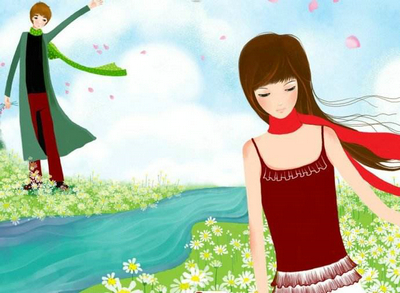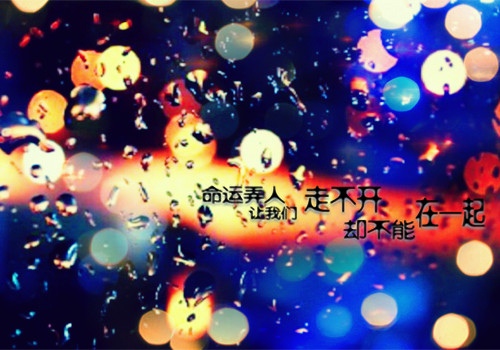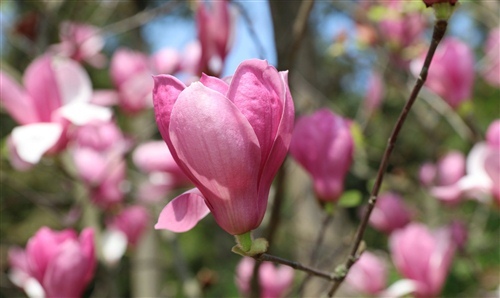
[image]100 谁会写导游词啊
三篇还有脱稿,时间来不及了。
。
。
中英文如下: 归元寺英文导游词 Guiyuan Temple Chinese Buddhist temples are never single buildings. They always consist of a group buildings following a fundamental patter, which can, however, be modified. The main buildings and their symmetrically corresponding secondary buildings form individual groups and courtyards. The entire temple complex is spacious. The building inside the complex are usually single-storied and the main halls are sometimes decorated with a double roof. The towers, pavilions and halls can be multi-storied structures. The Chinese temple complex has been subject to great structural changes throughout the centuries. But temple architects follow the basic principles of secular structures from the Tang Dynasty onwards. The complexes stand on a central axis, usually a north-south axis: east-west only as an exception. (Guiyuan Temple is just the very exception.) The main buildings are strung along this central axis, their broadest sides facing south or east. The most important and most frequently presented building inside a Buddhist temple complex are the main entrance gate, the bell and drum towers, the Hall of the Heavenly Kings, the Hall of the Buddha and a pagoda. Buddhism is said to be founded in India in the 6th century BC by Siddatha Gautama (BC565 –BC486), the son of a nobleman and member of the Kshatriya caste near the present borders of India and Nepal. Buddhism advocates that all the people are created equal and turns against the caste system of Brahmanism, so it was popular with the common people. It was said that Buddhism was spread to China in 2 BC. At the beginning, it was only regarded as a kind of witch. About 200 AD, Chinese version of Buddhist s criptures began to appear, and thus, Buddhist doctrines began to emerge with traditional Chinese religious thought. From 2nd century to late 6th century, translation and research of Buddhist sects with Chinese characteristics were becoming more and more popular and many temples were built, which reached its peak in Sui Dynasty (581AD-617AD) and Tang Dynasty (618-907). Some Buddhist sects with Chinese characteristics came into being. Buddhism exerts a great influence on Chinese philosophy, literature, art and folk customs. What is presented before our eyes is a copper statue of a famous bodhisattva in Hynayana Buddhism. Bodhisattva is a tittle which is only next to Buddha. This statue is the image of Avalokitesvara, which has been popular with Chinese people or more than 1,000 years. She is called the Goddess of Mercy cordially by Chinese and is regarded as the symbol of kindness, mercy and benevolence. When we visit the Avalokitesvara Pavilion after a while, I will give a detailed introduction about her. This copper statue was sent to Guiyuan Temple by Taiwan Buddhists in September 1990. It shows that all Chinese, whether in the mainland or in Taiwan, are eager for the reunion of the country, even including religion believers. The building we see now is the Buddha Hall where one certain Buddha and his two assistant bodhisattvases are worshiped. This Buddha is Amitabha Buddha. Amitabha means incomparable brightness. According to Buddhism, time and space is limitless and thus there are many many Buddhas in different spaces and times. But in a certain space or in a certain period of time, there is only one certain Buddha who is in charge of instructing all living creatures. Amitabha Buddha is the Buddha who presides over the Land of Ultimate Bliss in the west, which will come in the future. Buddhist s criptures describe the Land of Ultimate Bliss as a wonderland, in which no pain exists and the people enjoy their lives. In one word, it’s very attractive. Some people will think it must be very difficult to enter such a world. How can I go to such a paradise? Maybe I have to work hard and bear a lot of sufferings. In fact, it’s very easy to enter the world. He only need often murmur ‘May Buddha preserve us’ sincerely. It’s enough. You see, the statue in the middle is the very Buddha. On his left is the Goddess of Mercy. On his right is the other bodhisattva who follows the Buddha. It is said that he can save all the living creatures from three kinds of terrible disasters. Now, let’s step into the Buddhist s criptures Pavilion where the s criptures of Buddhism are kept. But I ‘m afraid what attracts our attention at the first sight must be this snow-white statue. It is a statue of Sakyamuni, the founder of Buddhism. This statue was carved out of a big piece of jade which is 2-meter-tall and weighs 3 tons. It was carved by Myanmar handicraftsmen and donated to the temple by the Rangoon Buddhists in 1935. If we watch the statue, we may sense that the peaceful expression on the Buddha’s face has brought us to a quiet and harmonious state. The last building we will visit is the Avalokitesvara Pavilion in the north yard. When we entered the yard just now we saw a statue of her. Now I’d like to introduce her carefully. As a goddess, she swore that she would not become a Buddha until all the living creatures suffering from pains were saved. So she became a bodhisattva who is most popular among the people and attracts the most believers of all the gods and goddesses in Buddhism. It was said that one would be saved from trouble and disaster as long as he (she) chanted her name and if it was heard by her. Thus she is called Guanshiyin, which means ‘hearing or looking on the voices of the suffering’. Because of her kind heart and benevolence she got another title ‘the Goddess of Mercy’. According to Buddhism, bodhisattvases have no distinction of sex, that is, they are neither male nor female, because they are immortals. But it’s very strange and interesting that most of bodhisattvases were engraved or carved in the images of various kinds of men in human society. Changes didn’t take place until an emperor’s mother thought it was inconvenient to worship a male bodhisattva in her bedroom. From then on, Guanshiyin, the bodhisattvas began to appear before her believers in the image of a beautiful and elegant lady. We’ll pay a visit to a very serious, sacred place. Generally, the place is regarded as the most holy by Buddhists. It is the Grand Hall, where the founder of Buddhism, Sakyamuni is worshiped. It is always the center of a Buddhist temple in construction and in Buddhists’ mind. The statue in the middle is Sakyamuni. According to Buddhism his mother gave birth to him in a garden. He belonged to Kshatreya Caste. He married his cousin when he was 16 or 17 years old. At the age of 29, he was confronted with the sights of an old man, a sick man, a corpse, and a wandering ascetic. With eyes opened to aspects of life newly revealed to him, he broke from the material world and became an ascetic. Six years later, he gave up mystic concentration that at last brought him enlightenment under a bo tree. He then founded an order of mendicants and spent his next 45 years preaching his ideas until his death. These two statue beside the Buddha are his two disciples. The one on the right was said to be Sakyamuni’s cousin and he had good memory so that he could remember all the Buddha told his disciples. The one on the left was said to be the lord of Brahmnism and he once was Sakyamuni’s tutor. But afterwards he was convinced by Buddhism after long-term debate between Buddhism and other religions and he accepted Sakyamuni as his tutor. Thus he became the eldest one of all Sakyamuni’s disciples. Next, we’ll pay a visit to the Ahrat Hall in the south court. The Ahrat Hall is an important structure in a Buddhist temple. But not all temples have an Ahrat Hall, especially, well-kept Ahrat Halls are very rare in China. This one is among them, and what’s more, it has its own unique characteristics. Generally, an Ahrat Hall is a square building. The building is subdivided into four small square courts so that the hall can get enough sunlight. This kind of structure show some lucky implies in Chinese Buddhist culture. Another characteristic about the hall lies in these sculptures themselves. They were neither made up of wood, nor stone, nor clay. A special way was taken in making them, which could prevents them from being burned, being soaked or being eaten by insects. All the sculptures were floating in water while Wuhan was flooded in 1954, but, surprisingly, they were sound and safe after the flood had receded. It was really a wonder. Ahrats are the immortals in Buddhism. But when you have a look around the sculptures, you may find from the expressions on their faces that they are so familiar to you. That’s only because they were molded on the basis of the people in the reality, so they are human beings in our daily life rather than immortals. Ahrats are the symbols of harmony, happiness, and good luck, so the Wuhan natives have got used to counting ahrats since ancient time to pray for peace. There are a few ways of counting ahrats. We can count from the first ahrat from left to right or from right to left, when we just enter the hall. We can also choose any ahrat as our starting point, and count in the same way, left to right or right to left. We should base counting on our own ages whatever we take. For example, I’m 25, so I should stop in front of the 25th ahrat from the starting ahrat. The sculpture in front of which I stop is my lucky ahrat. My lucky ahrat will accompany me to spend a peaceful and lucky year. Wouldn’t you like to have a try now? If you need, I can explain connotation of some ahrats. That’s all for the explanation to Guiyuan Temple. Thank you for your cooperation and understanding. You will have another 30 minutes to have a look around the temple. If you have any problems, do let me know. I would like to repeat our bus number, A3074. Please don’t forget. See you later. 各位游客朋友们: 我代表我们××旅行社欢迎大家的到来。
我姓张,大家就叫我小张好了
就好像人们常说的那样,相逢就是缘分。
能和大家相逢在美丽的江城武汉并和大家一起度过这段美好的时光,我感到非常荣幸。
这位是我们的司机倪师傅,驾驶经验非常丰富,所以各位在旅游途中可以放心地欣赏窗外武汉的美景。
今天就由我们两个为大家服务,大家有什么问题可以尽管提出来,我们将尽力为您解决。
希望能用我们的热心、耐心和细心换来你的放心、开心。
归元寺 归元寺位于武汉市内,是清顺治十五年(1658)浙江僧人白光、主峰来此创建的。
1983年被国务院确定为汉地全国重点佛教寺院。
现为湖北省佛教协会和武汉市佛教协会的所在地。
这里古树参天,花木繁茂,泉清水绿,曲径通幽,是“汉西一境”。
归元寺由北院、中院和南院三个各具特色的庭院组成,拥有藏经阁、大雄宝殿、罗汉堂三组主要建筑,占地面积17500多平方米。
北院的主要建筑是藏经楼,是一座两侧五开间的楼阁式建筑,高约25米,顶为大脊,鱼角搬爪,飞栱飞檐,古朴玲珑;当面为四柱通天,双凤朝阳,五龙戏珠。
整个建筑精巧壮观,金碧辉煌。
这里藏有许多佛教文物,除藏经外,还有佛像、法物、石雕、书画碑帖及外文典籍,是国内收藏佛像较多的一个佛寺。
1935年太虚法师出访缅甸时,仰光的佛教徒赠他一尊1吨多重的玉石雕成的释迦牟尼佛像,就供奉在这里。
这种佛像在我国只有三尊,其他二尊分别列供于北京和上海。
藏经阁里收藏的佛经有:清代《龙藏》一部,宋代影印本《碛砂藏》一部,清末民初上海印《频伽藏》一部。
另外还有两件珍品:一是清光绪元年(1875),湖南衡山69岁老人李舜千书写的“佛”字。
“佛”字是在长宽不超过6寸的纸上,由《金刚经》和《心经》原文共5424个字组成。
每个字只有芝麻大,肉眼分辨不清。
用30倍放大镜看,笔力挺秀,是书法珍品。
另一件是武昌僧人妙荣和尚刺血调和金粉抄成的《华严经》和《法华经》,字体娟秀,堪称精品。
中院的主体建筑是大雄宝殿。
该殿初建于清顺治十八年(1661),后经多次维修。
现大雄宝殿是清光绪三十四年(1908)重修。
大殿正中供奉着释迦牟尼坐像,两侧为其弟子阿难和迦叶像。
释迦偏袒左肩,结跏趺坐,庄严静穆。
佛像后背是用樟木雕刻而成的“五龙捧圣”的图案。
佛像前还有韦驮、弥勒、地藏像。
佛像后是一组海岛观音像。
只见海岛观音赤足站立,左右侍立着一龙女和童子,背后是一面高达八尺的泥塑悬崖峭壁,足下碧波万顷,怒涛汹涌。
整个塑像向前倾覆。
人们仰视上去,只见观音衣袖似在飘动,正在汹涌的波涛上迎面向你走来,增加了宗教艺术的感染力。
佛像前的供桌,是一件不可多得的木刻珍品。
供桌高4丈8尺,横阔1丈2尺,深宽2.5尺,前嵌垂栏,宽1.5尺,高0.6尺,其间分为五格,深画镂空。
图案描绘的是唐玄奘取经回长安时,君民夹道欢迎的场面:有唐僧、孙悟空、猪八戒、沙和尚等《西游记》人物,有李世民以下文武百官、侍卫、庶民百姓;有亭院殿墙,车马山水,幢幡宝盖,香炉蜡台等一应俱全。
综观全图,繁复活泼,盛况空前。
垂栏下沿为五龙云彩,周围匝绕,以四虎腿支地,生动有力。
相传这一樟木雕刻由十人历时一年才完成。
大雄宝殿前的韦驮殿内,供奉着一尊木雕韦驮像,身着铠甲,手持宝杵,威武挺立,用我国古代武将形象表达了古印度神话中“四大天王三十二将”之首的护法神形象。
这座木雕系用整块樟木雕成,线条刀法都是唐朝风格,是归元寺的艺术珍品,也是我国雕刻艺术品中的一件宝贵遗产。
归元寺属曹洞宗,又称归元禅寺,它与宝通寺、溪莲寺、正觉寺今称为武汉的四大丛林。
希望大家旅途愉快,谢谢。
描写湖 导游词
各位来宾,下面我们来到民俗宗教区—古寿圣寺参观游览。
一路走来我们看到湖边一座临水而建的黄色琉璃瓦覆盖的歇山顶的建筑就是——古寿圣寺。
我先给大家介绍一下古寿圣寺的历史概况。
古寿圣寺始建于宋咸淳年间,俗称‚南寺‛,为清乾隆三十三年前泰州所属(包括东方县)范围内‚十四大丛林‛之一,为传贤式主持。
该寺共有房屋92间,殿宇恢弘,佛像高大,前后四进大殿分别供奉‚四大金刚,哼哈二将,弥勒,十八尊罗汉,释伽牟尼佛和观世音菩萨‛,比今扬州的大明寺规模不相上下,占地500多亩,拥有亩产千万,可谓盛极一时,多桑佛界。
数百年间,屡有修茸,景况不衰,可惜文革时期,寺庙不幸被毁。
2001年经泰州市人民政府批准在溱湖风景区恢复重建,但也绝非前貌了。
古寿圣寺历经沧桑,七百余年间,香火不断,为佛教事业的发展,培养了大批人才。
今上海,南通,苏州,镇江等重大丛林中都曾有许多方丈是从这里受戒出家的,可惜后来由于兵荒马乱,殃及佛门古寺日渐衰颓,千百年来,凡是名胜古迹,总要和一些骚人墨客,文人名士来此驻足,留下他们的笔墨,留下他们的传闻,传为佳话。
各位游客:古寿圣寺同样也是一个佛事,也是文化,历史汇聚的场所,最后面的殿宇即‚文明遐迩的藏经楼——水云楼‛,明吏部侍郎储罐青少年曾在此读书,也称作读书台。
相传当初建造‚水云楼‛,旨在为抵抗南面的‚火叉头‛常使此地区失火的原因,故此‚水云‛二字刻之。
纵眼望去,古寿圣寺也是沿袭佛教传统布局,中轴线为主线,以正殿为中心,前后二殿烘托,左右有配殿,钟鼓楼列于两侧,形成‚伽蓝七堂‛,所谓七堂及佛殿,法堂,僧房,库厨,山门,厕净,浴室等。
一路走来,我们来到放生池,放生池是在明代以后,逐渐形成的一种格局,在佛教徒看来,放生是积德,积德乃行善者必有善报,这也宣扬了佛教的遗意义,众善奉行,在这里我们放生了小金龟和鲤鱼等 在放生池上一字排开的三座桥,中间一座大觉桥,左边一座普渡桥,右边一座慈恩桥。
大觉桥,大觉为大彻大悟,觉悟到了最高境界,只有佛才能称为大觉,寓意人们用我们所懂的道理去教化他人,当觉到功德圆满的时候即成为佛。
普渡桥,普为大众,渡为过去,从这边通过桥到达另外一边,普渡桥寓意从生到死苦的此岸到达乐的彼岸,用佛教的理念来讲就是诸恶莫作,众善奉行的思想来净化人的心灵,使每个人都能够离苦得乐,永不受轮回之苦。
慈恩桥,慈为慈悲,恩为恩德、恩惠的意思。
讲的是以慈悲的心境,用所觉悟的真理来教化众生,使人得到解脱,脱离婆世界的苦海。
恩有四种;父母恩、师长恩、众生恩、国土恩。
人生在世最难报的是父母恩,母亲十月怀胎,一遭分娩,犹如过遭生死关,父母的养育之恩。
师长恩,师长的教育,使我们智慧增长,走上人所欲敬的光明大道。
众生恩,众生分有情与无情两种,一切有生命有感情思想的为有情众生,无情众生为花草、树木、菜水,我们身边所有的人和物都是我们人生道路上成长的资粮,我们的成就是来自于他们的奉献。
国土恩,国为国家,土为土地,万物所生而归于土,要求我们公民要有报国之心。
我们从慈恩桥走过了放生池,来到了山门殿前,抬头看到高悬于山门殿的匾额‚古寿圣寺‛刚动有力,2005 年10 月5日,正当古寺举行佛像开光大典,诸多佛教界高僧应邀参加,正值开光揭牌洒净之时,万里晴空出现祥云,——佛光。
可谓上天恩赐普天同庆,也昭示了此地乃风水宝地。
山门殿又称三门殿,中间的门称空门,空解脱门,左边的门为无相门,无相解脱门,右边称为无作门,无愿解脱门,左边无相门,佛教认为要解脱人生诸般痛苦就要绝众相,(‚色、香、声、男、女等皆为相‛ )‚观诸法之相,本无差别‛,最终归结为空。
所以无相门又称绝众相解脱门。
右门叫作无作门 ,佛教认为人间诸般痛苦,如生、老、病、死,爱、别离,求不得均是人自己造作之果,自作自受,共作共受,先作后受,不作不受。
‘观生死可厌而不作’故称无作门。
空门有叫不二法门,所谓不二,是指超脱现实世界矛盾之外的佛
之门,即不问世事,专必潜修,这一‘绝对真理’是惟一不二的。
走进山门殿,这里供奉以法神将哼、哈二将为主,是根据[封神榜]陈奇、郑伦二将的人物形象塑造的,他们表情严肃庄重,显示出佛门重地,庄严静穆的氛围。
穿过山门殿,我们来到天王殿,迎面的这一尊就是佛国世界三世



